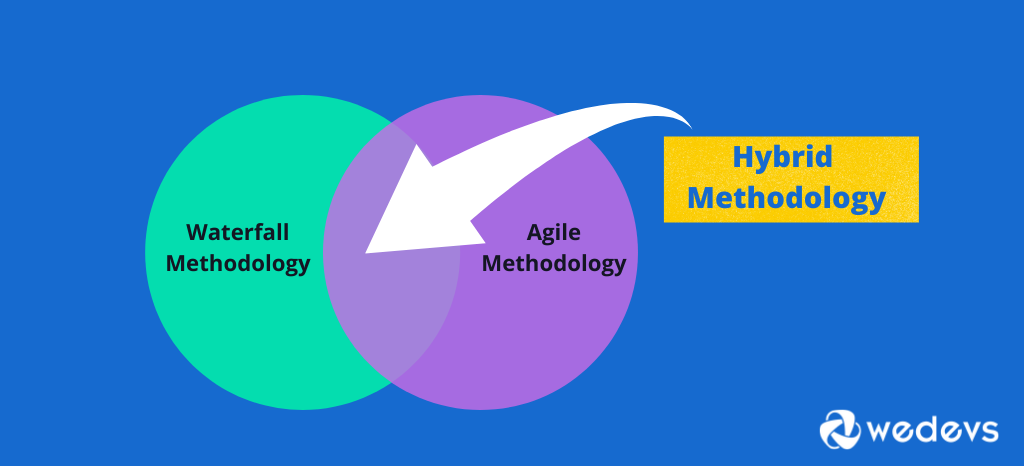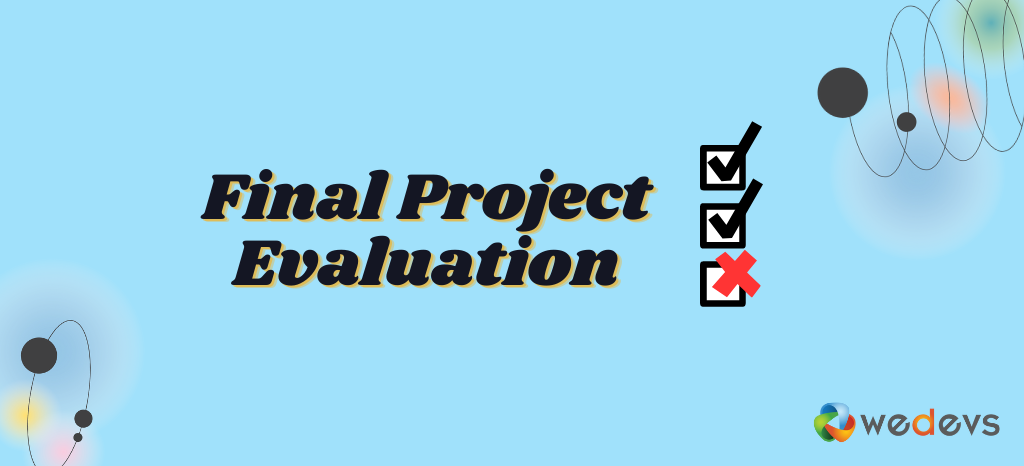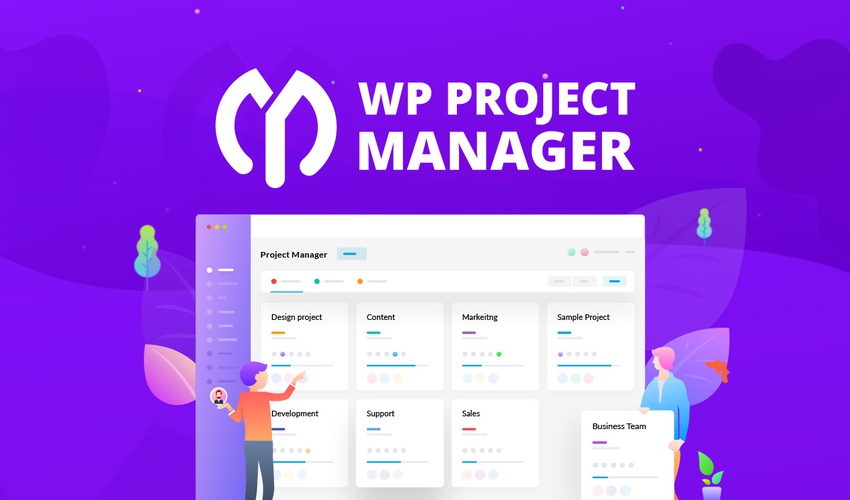
7 Project Management Strategies To Get Ahead Of The Game (Tips+Tool)
Project management strategies are all about having a crystal clear plan about how you will complete your project. Modern project management relies heavily on digital platforms and methodologies. But the importance and main objective has always been the same for hundreds of years.
That is to complete a project in the best way, at the lowest cost, and in less possible time.
As the great Aristotle said thousands of years ago:
First, have a definite, clear practical ideal; a goal, an objective. Second, have the necessary means to achieve your ends; wisdom, money, materials, and methods. Third, adjust all your means to that end.
With time, the importance of organized project management only increased. For specific needs, we have many project management methodologies that we practice nowadays. With these advanced methodologies and proper strategies, you can complete a project in the most effective way.
In this article, we will show you 7 project management strategies that will ensure that you don't have to waste more time, effort, or resources than you need to. But first, let's get a clear overview of modern project management.
What is Project Management and Why Project Management is Important
Project management is the combined plan and process of achieving specific project objectives by utilizing the manpower, resources, time, and tools in the most optimal way.
Modern project management consists of a set of project management tactics that can deliver predictable, repeatable results. The methodologies and strategies that we follow these days are highly analytical, and decisive.
Yet, studies show that only 23% of companies have standardized project management systems like a waterfall and agile in use.
According to PMI, organizations that undervalue project management see 50% more of their projects failing. And even when a project has a management system in place, it can still fail due to not appropriate strategy.
In this era, those who didn't yet catch up to the strategic planning of a project can rarely succeed on a project. So, now let us show you how you can successfully finish your project by following the proper project management strategy!
7 Project Management Strategies for Beginners to Successfully Complete a Project

There are a lot of project management strategies that you can follow for a successful project. Out of them, we will focus on the key strategies that impact the success of a project the most.
Let's take a look at the 7 project management strategies that one must follow for successful project completion:
- Finalize Project Details Before the Project Begins
- Decide Which Methodology to Use
- Form the Right Team for the Project
- Set Up Clear Communication Between the Departments & personnel
- Avoid Making Big Changes (Scope Creek) During The Project
- Evaluate the Project After Completion
- Use a Quality Project Management Tool for Optimal Results
Now we are going to discuss each of the above mentioned points in detail. So, let's get started with the first project management strategy-
1. Finalize Project Details Before the Project Begins
Even before you start working on your project, you need to finalize the project details. A clear plan of what you're trying to achieve helps you to complete a project in the best possible way.
- Roles & Responsibilities: The detailed plan for the project should feature the various roles of the personnel that will work on the project, along with their responsibilities. This makes the work process organized and helps avoid any delays.
- Work Breakdown Structure: Work Breakdown Structure helps divide a big project into small and manageable tasks. This will help the task breakdown for employees, dependency, and flow of work as well.
- Milestones: The plan should also include the milestones that will help the project to be on the right track. Milestones are great for keeping track of the work progress. Especially to track the small chunk of the work that you will divide using the Work Breakdown Structure.
- Setting Deliverables & Deadlines: You will also have to define the deliverables, and deadline, before starting the project to keep the project packed within the set timeframe.
Finalizing the project details does not mean the project does not or will not need any modification along the way. In fact, today, more than ever, project management is more iterative than ever.
That is why methodologies like Agile are quickly getting popularity. Making a clear plan of the project before starting on it will not bind you. Rather it will make you and your employees for adaptability to the sudden change of plans. It will also keep the project stability and deadline intact.
2. Decide Which Methodology to Use

If you are not familiar with the term project management methodology or the different types of methodologies that exist, here's a simple definition.
A project management methodology is a set of principles and practices that can help you organize your project management for optimal results. No project is ever 100% similar to another, thus the working process is also not the same for two projects.
There are a couple of project management methodologies that are most widely used. Among them, you have to choose the one that suits your project the most.
Below are some of the most popular project management methodologies that project manager often uses.
a) Waterfall Methodology
Waterfall is the traditional way of project management. The name waterfall methodology was introduced because of the linear and sequential approach of this model. Before beginning the next step of the project, the previous one needs to be completed.

Waterfall methodology is mostly suited for projects that have a clear outcome or goal. It also does not have any scope for iteration or modification of the plan along the way. A good example of such projects can be the type of projects that automobile manufacturing companies have. These projects usually have pretty much no chance for change along the way.
b) Agile Methodology
Agile is another popular methodology that gained traction in the 2001s. Its inception actually dates back to the 1990s. It is the result of the growing need for a new way of managing projects, more adaptive to change. Agile methodology focuses on having short periods of work with continuous testing, evaluation, and adaptation throughout the process.
As such, the final products that come out are often not completely the same as the ones planned.

As the agile methodology focuses on being fast, the final product can be deployed early. However, it then goes under further evaluation and iteration to become a complete problem/error-free product.
The popularity and acceptance of the agile methodologies later fueled the growth of other newer methodologies. These methodologies include Scrum, Kanban, and more. Agile itself is great for digital products where the final results can afford to have deviations from the initial plan.
In fact, 80% of CMOs have noticed improved team productivity with Agile. Companies that adopted Agile also experienced 60% in revenue and profit growth.
c) Scrum Methodology
Scrum is somewhat of an adaptation of agile methodology. Scrum methodology breaks down the entire project duration into short periods or cycles, also known as “sprints”. The sprints usually last for one or two weeks.

Scrum usually has scrum masters to lead small teams working on parts of the projects at a time. This is unlike sequential task completion in the waterfall methodology. Keep in mind that, the scrum master roles are not similar to project managers.
d) Kanban Methodology
Kanban is also a framework within agile project management. It originated from the Japanese manufacturing industry. Kanban Methodology is a framework in which all the tasks are visually represented as columns on a Kanban board. Kanban gives an overall visual overview of each task of a project at any specific time.
This way, it is possible to find out why there is a delay in a part of the project.
e) Hybrid Methodology
Both waterfall and agile (including its frameworks or modified versions) have their flaws. Waterfall methodology needs a lot of time before you get to see the output. It is not great for a fast-paced market where competitors are well-matched and consistently competing with each other.
On the other hand, agile is susceptible to scope creep and constant iteration. This makes it hard for the customers to get used to a product. Which actually makes the user experience worse. Thus many project managers are now taking good notes from both waterfall and agile methods. More and more PMs are nowadays implementing something like an agile-waterfall hybrid.

Here's what we found on the hybrid methodology manifesto –
Hybrid Project Management combines the formal and Agile methods to create a new project management method. Hybrid employs the thoroughness of Work Breakdown Structure (WBS) with speed and lean benefits of Agile for a new project management method which is both detailed and fast.
Apart from these popular methodologies, there are also other models that are used by many. It is very important to choose a suitable methodology perfectly, as this will dictate how quickly and efficiently you can complete the project.
3. Form the Right Team for the Project
No project can ever be successful without the right personnel to handle every single task. Each of your hires should be aligned with the responsibility you want them to take up. A person may have the world of experience, but if they are not the right fit for the role and the responsibility then they should take no part in the project.
It is important to not build your team with overlapping qualities, as they can only drag down the project to delay. That's why the teams should also be small
Furthermore, your team should have a clear hierarchy and proper task distribution for each of the employees to take advantage of the great team that you hire.
4. Set Up Clear Communication Between the Departments & personnel
Communication is a big deal-breaker for most projects. That is why an effective communication plan should be a very important part of your project management strategies.
80% of employees spend half of their workweek on “rework” caused by poor communication
Capterra
If you're wondering what we mean by a communication plan, it includes a designated channel of communication, prescheduled time of meetings, and such.
- Setting up Communication Channels: Every team needs to have an internal communication channel. To connect in between the project there are several channels that you can take advantage of. Slack, Microsoft Teams are two of the most popular method of communication for a project or workplace.
- Scheduled Meeting: Every project needs to have a designated meeting time scheduled, weekly or bi-weekly. This will help the project manager to keep up with the progress of the project. These meetings are also helpful for solving any problems that team members might be facing. Furthermore, the meetings will also make the direction of the project clear and will help to decide if it requires any iteration or not.
5. Avoid Making Big Changes (Scope Creek) During The Project
While modern project methodologies put great emphasis on the iteration of the project plan, it is suggested to not make big changes. It is not the right thing to make as many changes as possible. Because, in that way, the end product will look nothing like the project that was intended.
In project management terms, when unlimited changes are made to the project scope without any sort of control procedure, it is called scope creek. Scope Creek affects the project schedule, budget, costs, and resource allocation, which is not great news for the project manager with set resources and time. Scope creep is probably one of the most common project management risks that project managers often come across.

As scope creep occurs when new project iteration requests are added after the project has started. However, as the changes come during the project, often they are not reviewed properly. Therefore, it makes the team complete more tasks than planned, assign more deliverables and milestones with the same resources as before within the same timeframe.
6. Evaluate the Project After Completion
Each project has a goal that needs to be achieved through the project. By evaluating your project after completion, you can find if there are any problems or dissimilarities to the initial project goals. And only after evaluation, you can say the project ready.

This is why we value project evaluation so highly. During the final evaluation, the following things should be closely monitored –
- Compare it to the Prototype: Do you create a prototype (either digital or physical) of how the project should look like when you finish it? You should. And after you complete the project compare it to the prototype.
- Run Q/A Testing: Quality assurance testing is a must whether the product is software or hardware. Through Q/A testing process should be followed once a project is finished, so that no issues are created when the project is handed over to the client/customer/user side.
- Run UAT: User Acceptance Testing or UAT lets the project manager know what the users think about the product. UAT testing makes it easy for the project manager to find out the room for improvement to make the product more user-friendly.
Overall, project evaluation gives a clear idea of what went well on the project and which part could've been better. The takeaways will help improve both the project at hand and the projects to come in the future.
7. Use a Quality Project Management Tool for Optimal Result
The final strategy that we want to talk about today is using a good project management tool. Using a dedicated project can make a project manager's life easy by helping to keep a project on track for success.
Project managers make planning and scheduling tasks very easy. They also let the employees access the information they need and restrict those that they don't need. Project management tools are also known for improving productivity while reducing the project budget.
While choosing the right project management tools, you have to keep in mind the following –
- The features that you need
- Whether you want an offline or online project management tool
- If you need a tool that charges a fixed amount or per user
- Your budget
Only after considering all the factors above, you can choose a tool that suits your project the best. Of course, you can get the costly all-star tool. But if you have a small to medium-scale business, what you need is an affordable project management tool, that has all the features that you need for a successful project.
To make your project a successful one, take help from WP Project Manager, an affordable project management tool that is absolutely perfect for SMEs. In the next part of the article, let's take a look at the plugin, and why we recommend you to use it.
WP Project Manager: A Project Management Tool to Manage and Deliver Projects with Ease

WP Project Manager is an affordable and open-source Project Management tool based on WordPress. It helps to efficiently implement project management strategies. The tool offers some exciting features and opportunities that help make a project successful. The key benefits of using WP Project Manager are as follows –
- Unlimited Users & Projects: Most project management tools charge per user and limit the number of projects and tasks you can create. However, with WP Project Manager, the sky is the only limit. You can create literally unlimited projects, tasks and add unlimited team members.
- Gantt Chart: Gantt Chart allows for organizing the project hierarchy by letting you assign dependencies among different tasks and subtasks. This lets you see the reason behind the delay on a task in a visual representation, at any given time.
- Kanban Board: Kanban Boards are given high importance for project management, even if you don't actually follow the Kanban Methodology. With board-style task management, you can create tasks, drag and drop them among different boards letting your team members work more efficiently.
- Control Team Capacities & Member Roles: With WP Project Manager, you can customize the permissions and assign specific roles for members as needed. You can also effortlessly add external members to the project as well.
- Files & Documents Manager: WP Project Manager also have a file & documents manager to store all the project files. You can also navigate to the linked messages, task lists, or tasks from the file section.
- Personal Dashboard for All Users: WP Project manager offers a dedicated dashboard for every team member, where they can see their assigned and completed tasks, and other reports.
- Overview Dashboard: To get an overall report of the project, the WP Project Manager has an overview dashboard feature. From there, you can get a birds-eye view of all the ongoing projects, the progress, and the teams. You can also create projects, add, edit team members, user roles, and other tasks from here.
After considering everything, it doesn't take much to understand that WP Project Manager is an excellent tool for managing projects. You can be even more convinced after knowing the pricing of the tool, which is absolutely affordable.
The personal plan of the WP Project Manager starts at $79, while the professional and business plan is starting at $149, and $249 respectively.
Most Common FAQs on Best Project Management Strategies
The 5 Ps of project management are the key areas that project managers need to focus on during the lifecycle of a project. They are:
Project: Refers to the actual work or initiative that needs to be accomplished.
People: Encompasses the team members, stakeholders, and anyone involved in the project.
Process: Refers to the project management processes, methodologies, and practices used to guide the project to successful completion.
Product: Represents the final deliverables or outcomes of the project.
Planning: Involves creating a detailed project plan, outlining the tasks, timelines, resources, and budget required for successful project execution.
A PM strategy, also known as a Project Management Strategy, is a comprehensive plan or approach that outlines how a project will be managed from initiation to completion. It includes various elements such as defining project objectives, establishing project scope, determining roles and responsibilities, identifying risks, planning communication, and setting project timelines and milestones.
The two most general techniques in project management are:
PERT (Program Evaluation and Review Technique): PERT is a method for analyzing the tasks involved in completing a project, estimating the time needed to complete each task, and determining the critical path for the project – the sequence of tasks with the least flexibility in scheduling.
CPM (Critical Path Method): CPM is similar to PERT but focuses on identifying the critical path, which is the sequence of tasks that must be completed on time to prevent delays in the entire project.
There are various project management methodologies, but six of the most commonly used ones are:
Waterfall: A linear and sequential approach where each phase must be completed before moving on to the next.
Agile: A flexible and iterative approach that prioritizes customer collaboration and responding to change over rigid planning.
Scrum: An Agile framework that divides work into sprints, usually two to four weeks long, with a focus on continuous improvement and adaptability.
Kanban: An Agile framework that visualizes work on a board and emphasizes a smooth flow of tasks through different stages.
Six Sigma: A data-driven approach to project management that aims to eliminate defects and improve processes continually.
PRINCE2 (Projects In Controlled Environments): A process-based method for effective project management, widely used in the UK and internationally.
A Successful Project is Just a Great Strategy Away
Proper project management strategies can be a game-changer for project success. Too many great projects have failed due to not having a clear strategy and your project should not be next.
In this article, we shared clear step-by-step project management strategies for you to go about a successful project. This project management technique blog includes everything from methodology to how you should form your time to achieve success. In the end, we also shared a great tool that can support you through your project management.
Have any questions or experiences that you would like to share? Feel free to comment down below.